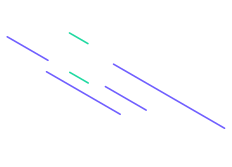






Name
Chamberlain University
NR-505: Advanced Research Methods: Evidence-Based Practice
Prof. Name
Date
This week provided me with a deeper understanding of qualitative research and its unique purpose in nursing studies. Unlike quantitative research, which emphasizes numerical data and statistical results, qualitative research explores human experiences, perceptions, and motivations within real-life contexts. The findings are typically expressed in narrative or descriptive form, making them highly valuable in examining patient-centered care.
Finding an appropriate qualitative article was somewhat challenging at first. However, utilizing the CINAHL with Full Text database expanded the search process and made it more effective. Additionally, the Johns Hopkins Nursing Evidence-Based Practice (JHNEBP) Appendix E appraisal tool was particularly beneficial, as it provided structured guidance to identify and differentiate qualitative studies from other types of research.
Initially, I reviewed several articles before identifying one that explicitly stated “qualitative descriptive study” in its title. Although this helped, I still thoroughly examined the full article to ensure its methodology aligned with qualitative principles. The article proved to be appropriate since it examined patient experiences and perceptions of various resources provided for pressure ulcer prevention. The study further assessed whether these interventions were suitable based on individual patient conditions.
Yes, this research design is appropriate because it explores subjective experiences, which are best captured through qualitative approaches. Understanding patient perspectives allows healthcare professionals to refine and personalize interventions, thereby improving care outcomes.
Yes, a similar study could be replicated in more complex environments, such as intensive care units or long-term care facilities, with different evaluation measures. This would allow researchers to explore diverse patient needs and the effectiveness of pressure ulcer prevention strategies across varied clinical contexts.
Each research design serves a distinct purpose and uses different methods for sample selection, data collection, and data analysis.
| Research Design | Purpose | Sample Selection | Data Collection | Result Representation |
|---|---|---|---|---|
| Qualitative | Explores patient experiences, perceptions, and motivations. | Purposive or convenience sampling. | Interviews, focus groups, observations. | Descriptive themes, narrative findings. |
| Quantitative | Tests hypotheses, measures variables, and identifies statistical relationships. | Randomized or stratified sampling. | Surveys, structured tools, clinical measurements. | Numerical data, statistical outcomes. |
| Mixed-Method | Combines patient perspectives with measurable outcomes for holistic insights. | Combination of purposive and random sampling. | Both interviews and structured surveys. | Integration of themes and statistical data. |
Having gained experience with qualitative, quantitative, and mixed-method studies in weeks 3 and 4, I find that I strongly prefer the mixed-method design. This approach provides the best of both worlds—qualitative research captures patient experiences and perceptions in depth, while quantitative research ensures generalizability and statistical validity. Together, they offer a more comprehensive understanding of clinical issues and enhance the applicability of findings in real-world healthcare settings.
Johns Hopkins Medicine. (2022). Johns Hopkins Nursing Evidence-Based Practice: Appendix E – Research evidence appraisal tool. Johns Hopkins Medicine. https://www.hopkinsmedicine.org/nursing
Polit, D. F., & Beck, C. T. (2021). Nursing research: Generating and assessing evidence for nursing practice (11th ed.). Wolters Kluwer.
Sandelowski, M. (2010). What’s in a name? Qualitative description revisited. Research in Nursing & Health, 33(1), 77–84. https://doi.org/10.1002/nur.20362